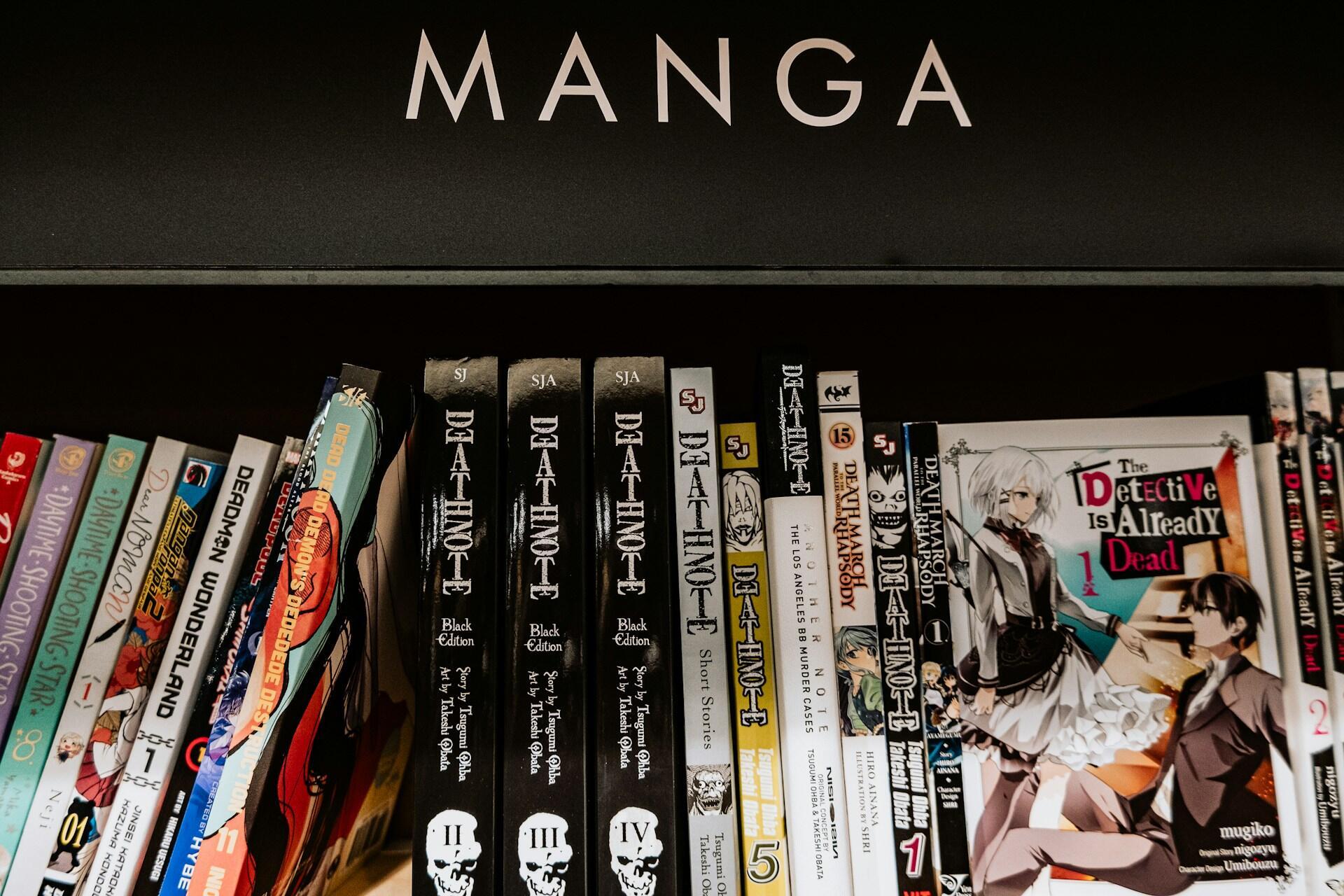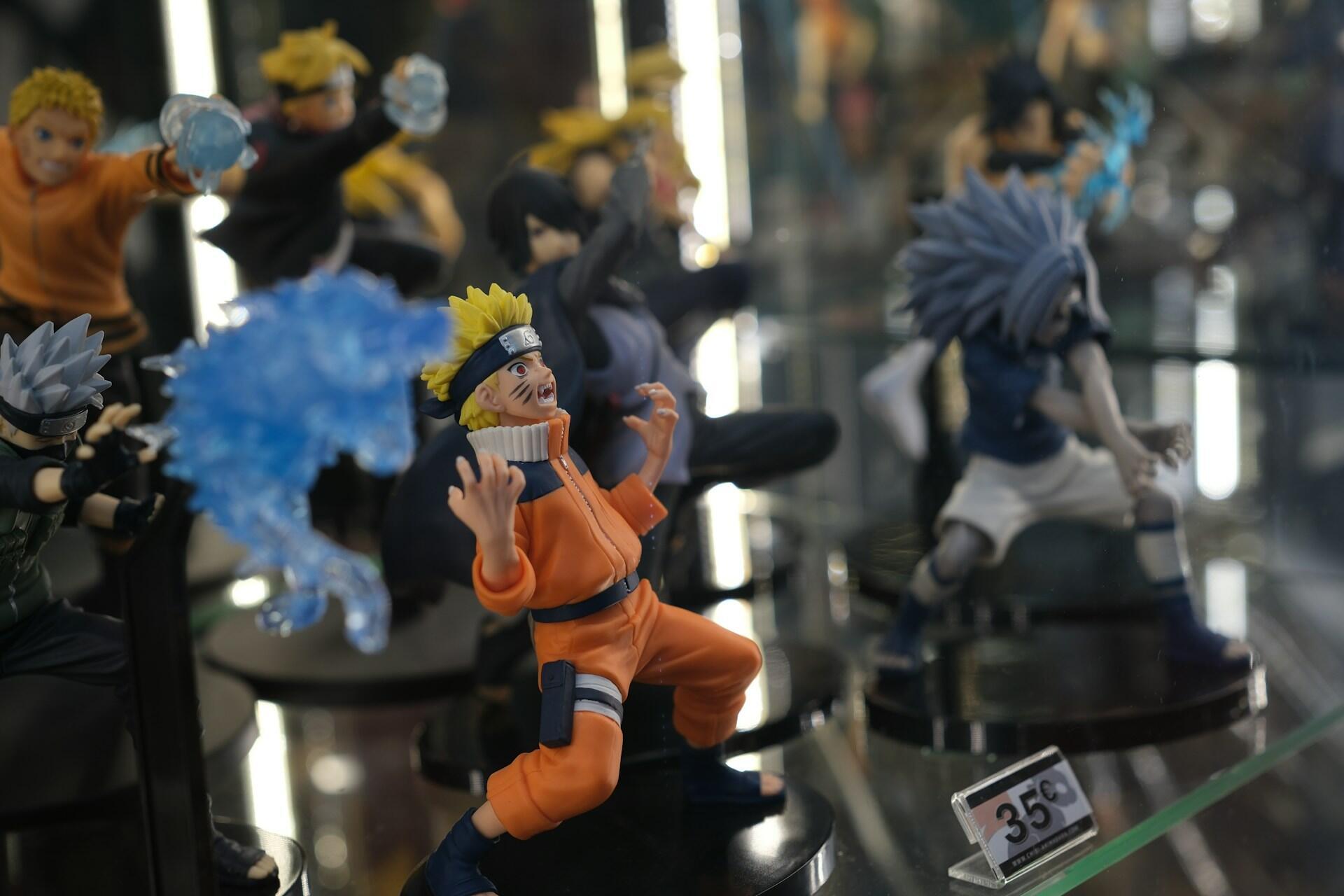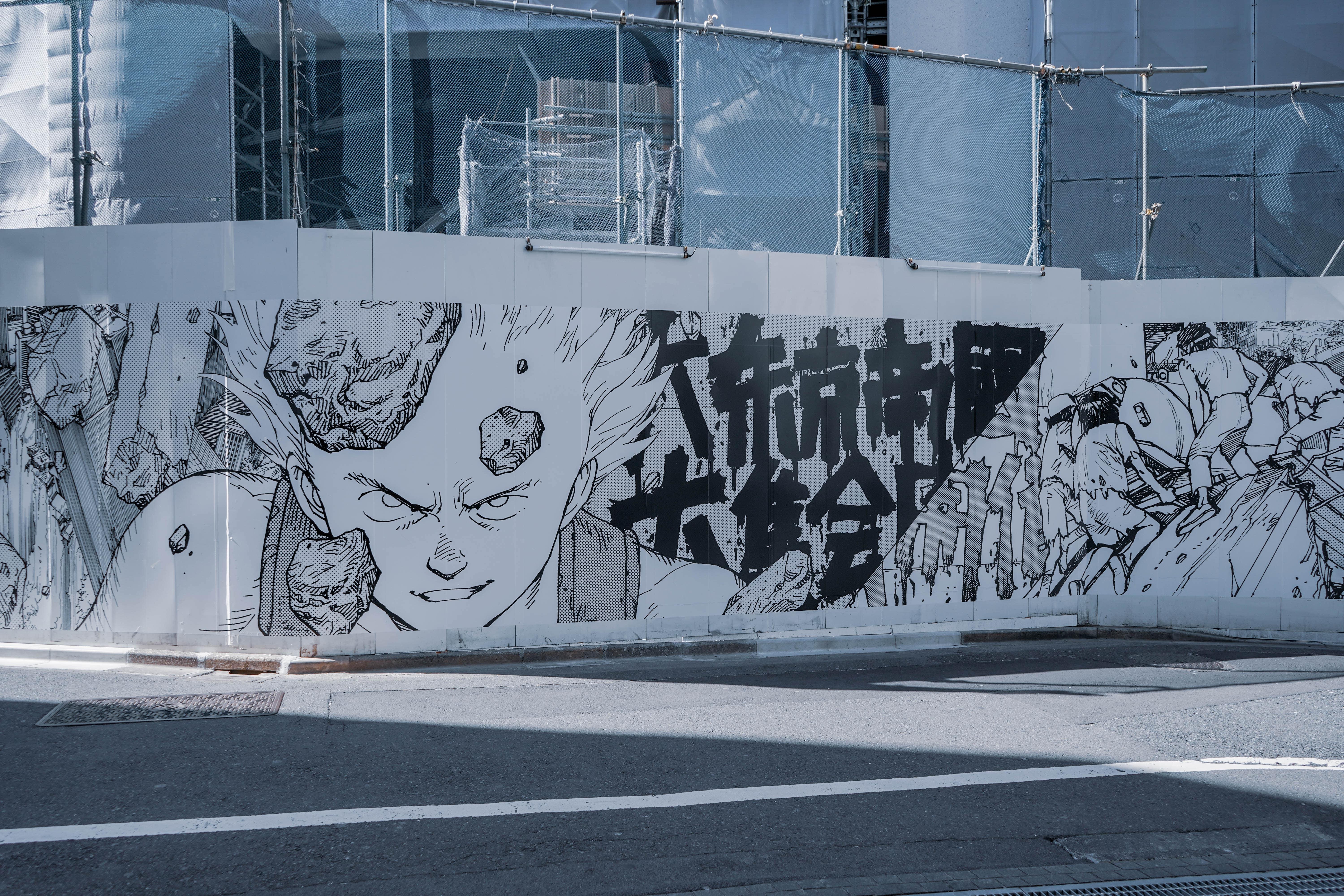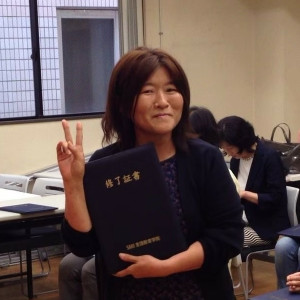Did you know both American and international anime fans gather at Anime Expo in Los Angeles every year to celebrate the rich history and ongoing legacy of anime culture? To the rest of the world, anime was first viewed as a style of hand-drawn or computer-generated animation that originated in Japan and served as a gateway to Japanese culture and influence.
In fact, the term ‘anime’ (アニメ) is derived from the English word ‘animation’ and is now synonymous with a wide range of engaging, in-depth storytelling and artistic visuals found in many Japanese animated series and movies. Over the years, anime has transitioned from a niche art form into a global cultural phenomenon through the following key milestones:
1910s
One of the oldest surviving Japanese short animination films, Namakura Gatan (The Dull Sword), was released
1950s
The first colored anime feature film, Hakujaden (The Lengend of the White Serpent), was released
1960s
Astro Boy was launched as a black and white animated television series
1970s
Introduction of the mecha genre anime (robot) like Mobile Suit Gundam
1980s
Akira became one of the first iconic anime films to gain international acclaim and help popularize anime outside Japan
1990s
Legendary childhood animation series like Sailor Moon, Pokémon, and Dragon Ball all became worldwide phenomenon
2000s
Hayao Miyazaki's film, Spirited Away won the Academy Award for Best Animated Feature in 2003.
2010s
Your Name (Kimi no Na wa) swept the world of cinema, earning over $380 million worldwide and was the highest-grossing anime film of that time.
2020s
Demon Slayer: Mugen Train dominated the Japanese and worldwide box office, surpassing Your Name and Spirited Away

What Is Anime?
Whilst, to the rest of the world, anime is something they do in Japan, for the Japanese themselves, this term means something a lot broader. 'Anime,' in reality, is just short for 'animation.'
This means literally any animation production, Japanese or non-Japanese, for kids or for adults. Consequently, anything you might see on Cartoon Network or PBS – regardless of its geographical region – could be called anime.
However, things with this word are a little more complex than this – as not all Japanese animators like the term.
The famed animator, Hayao Miyazaki – known for his work with Toei Animation and, later, Studio Ghibli, with whom he made the hit films, Spirited Away and Princess Mononoke – is one of these. His argument is that this shortened term, 'anime,' really expresses the decline of the animation form.
This term came about in the eighties, with the mass production of anime series, and its verbal contraction expresses the new limits of the form in general.
Each to their own; it's not the place to have these conversations here. However, this attitude suggests that not everyone is over the moon about the state of Japanese manga and anime.
Discover Why Japanese Anime Is So Popular
The history puts into context the developments in – and the growing popular awareness of – this art form known as anime. But does it explain its enduring popularity? No, we suppose not.
The key thing to know about anime is that it is a massive industry, it's a form of cultural identity and power for Japan, and it is a hugely diverse scene. It is not a monolithic thing, but rather the name we give to a very broad category of different products. These, if not the history, are the things that explain its success.
Let's take a closer look.
💸 It's A Massive Multibillion-Dollar Industry
Let's be a little cynical, just briefly.
The anime industry is worth a huge amount of money: $19.1 billion annually – or at least in 2017. To put this in perspective, the entire global film industry is worth $136 billion annually – including box office and home entertainment.
This data is from 2009 to 2019
Even though this figure includes everything from the light novel to the anime games, the merchandise to the anime movies themselves, Japan's anime makes up a fairly huge chunk of the world's film industry.

🗾 It's Ubiquitous
Japan's anime industry is massive. And, as a result, anime imagery is everywhere across the country. This doesn't necessarily mean that recognizable anime characters are everywhere. However, the style and tropes of the form are ubiquitous.
In airports, in railway stations, on school buses, on snacks, and on bottled water, you'll find images from anime almost anywhere you look.

🇯🇵 It's a Symbol of Japan
As we said above, anime has become associated with Japan – for better or for worse. Whilst this sounds obvious – because it all comes from Japan – the point is a bit of a different one.
When people talk about a country's influence around the world, they talk about two types of power: 'hard' power and 'soft' power. 'Hard' power is the sort of power which we conventionally understand as power: with guns, invasions, and soldiers. 'Soft' power, however, is about culture. The US is very good at this: everyone across the world listens to American music, watches American films and TV shows, and speaks English.
Anime is Japan's own version of all this. If everyone is watching Japanese anime, of course, Japan is going to be happy about this – and so will give the industry as much help as it can get.
According to Parrot Analytics, a global audience demand analytics firm, Attack on Titan was named the "World’s Most In-Demand TV Show" in 2021.
This is the first time a non-English language series achieved this distinction, an honor previously held by high-budget Hollywood productions such as Game of Thrones and The Walking Dead.
🎥 There Is an Anime Genre for Everyone
If you're an absolute newbie to the world of anime, you'll never run out of recommendations, whether through word of mouth or a simple Google search. There are specific genres for different targeted audiences of different age groups (going beyond anime for children) and genders, before we even go deeper into individual preferences. For example, there are anime genres produced specifically for teen boys and teen girls:
Shonen Genre
- Targeted audience: Teen boys
- Usually action-packed stories with themes of growth, friendship, and adventure
- Examples: Naruto, One Piece, Attack on Titan
Shojo Genre
- Targeted audience: Teen girls
- Centers around relationship-based stories and inner growth
- Examples: Fruit Basket, Sailor Moon, Cardcaptor Sakura
Generally, one of the most popular and universally accessible anime genres is slice of life, or known as Iyashikei in Japanese, which was adapted from many popular Japanese manga (comic books). These stories often focus on everyday experiences, featuring lovable characters and beautiful, emotional successful examples include Natsume's Book of Friends, Only Yesterday, and Kiyo in Kyoto. These shows can be enjoyed by kids, parents, and even grandparents together.
On the other hand, it's hard to pick a favorite anime as there are also anime genres with different themes which appeal to the older audience:
Seinen Genre
- Targeted viewers: Mature adult men
- Usually action-packed stories with themes of deeper psychological ideas
- Examples: Darker than Black, Psycho-Pass
Isekai Genre
- Targeted viewers: All ages (generally young adults)
- Revolves around life in another world (blending of fantasy and imagination)
- Examples: No Game No Life, Re: Zero
🏯 It Provides Cultural and Global Appeal
In Japan, anime dominates pop culture. In contrast, the West only views it as a new form of entertainment.

For instance, Japan's colossal pop culture includes; music, video games, local Japanese cuisine, cinemas, and TV, and anime finds its way into all of this.
It goes side by side with all these entertainment categories and, this is something only seen in Japan and not the rest of the world. Additionally, most of Japan's pop culture segments can also trace their origins to Japanese art.
Apart from being a huge success in Japan, anime has struck a global appeal with its ability to bridge universal themes throughout its movies and series. Many of its forms include elements of Japanese history, culture, and folklore, while also showcasing themes of friendship, love, and personal growth. This helps draw in viewers not only from Japan, but worldwide!
👀 Anime Viewers
(Asian regions)
75.87% of the population
70.50% of the population
50.70% of the population
42.70% of the population
👀 Anime Viewers
(non-Asian regions)
71.86% of the population
62.50% of the population
55.70% of the population
34.68% of the population
What the Future Holds for the Anime Industry
According to the latest analysis report released by Grand View Research on Anime Market Size, Share & Trends, the anime industry is expected to grow even further based on regional research in Japan and even in the American market. As of 2025, the market size value of the anime market is $37,698.9 million!
This is largely due to the continuous growth of the global fanbase, along with a significant amount of investments from major streaming platforms. Not to mention the rise in cultural exports, including anime conventions, Japanese animation cosplay events, and the number of merchandise produced annually! This means we will see more Japanese-produced and even non-Japanese-produced animation projects being introduced.

🤖Impact of Artificial Intelligence on Japan Animation Production
We have seen how artificial intelligence and virtual reality act as a double-edged sword in our modern-day world, and especially so in anime production. On one hand, it seems so "easy" to generate an anime-inspired cartoon image. Just take a look at the latest AI-generated trend on Studio Ghibli film animation style, which has the internet divided.
It's a debate and dilemma that most art enthusiasts face. For professional animators in the future, this could signify a change to switch to a fully digital anime experience through AI prompts. Can the history and legacy of making hand-drawn, intricate animation persevere with its original artistic flair when so much self-generated content is saturating the anime production market these days?
None of us can truly answer this question at this point in time, but we know that the anime industry will continue to soar to greater heights in Japan and beyond Japan.
Learn How to Write, Produce, and Draw Anime with an Expert
In conclusion, Japan and anime have a great relationship that goes way back in history. Therefore, the art knows no age and isn't bound by cultural or societal norms.
This is why everyone becomes a fan of anime, no matter at which age they start watching it.
Most kids in Japan and worldwide started watching anime in childhood and stuck with it through adulthood. And if you're one of them, your love for consuming anime has probably turned into a desire to create it.
Hence, if you want to level up your love for anime, you can visit Superprof and learn to write, direct, or even draw anime. At Superprof, you can learn a massive variety of skills, courses, and even languages. All you need to do is sign up and start your journey of fun and learning today!















This was a great article! Thanks :)
I loved this website! It really helped me with a project in sixth grade!
I’m in 6th grade too and is so true
I’m in 6th grade to and is so true
good website